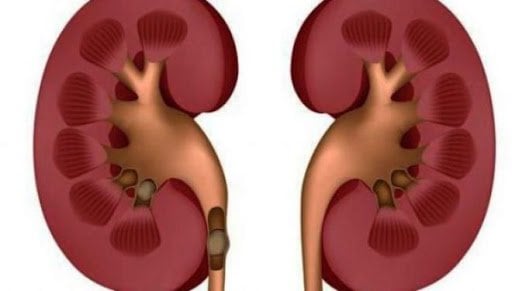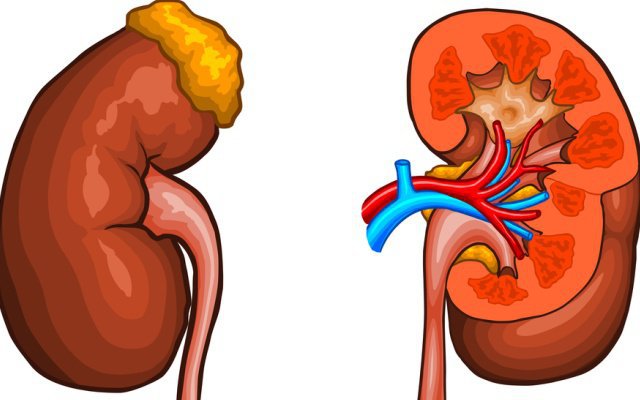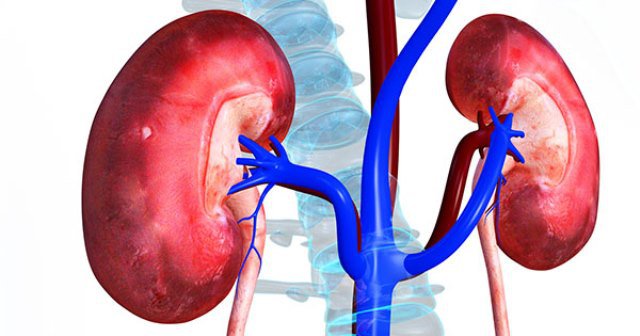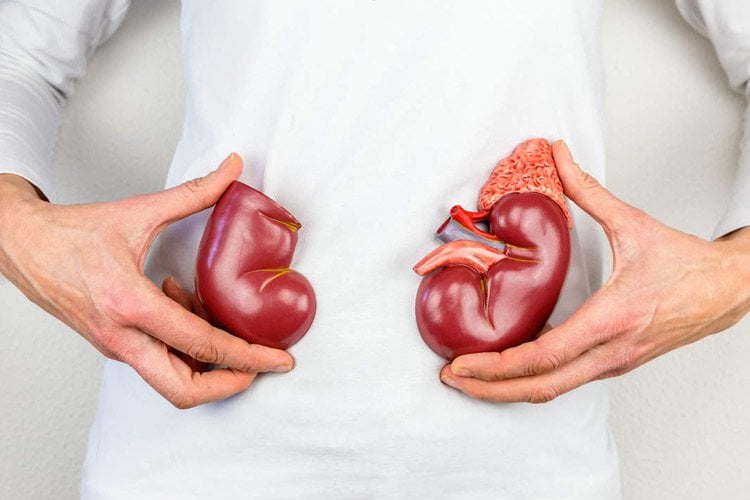Acute tubular necrosis after ischemia
This is an automatically translated article.
Post-ischemic acute tubular necrosis is caused by blocked capillaries that prevent blood from circulating to this organ. The condition occurs mainly in patients with low blood pressure, dehydration, and severe infections. This is a serious disease with a high mortality rate if not detected and treated promptly.
1. What is acute tubular necrosis after ischemia?
The inside of the kidney consists of many small tubular structures that remove salt, excess fluid, and waste products from the blood. Post-ischemic tubular necrosis is a condition in which these small tubules are damaged and destroyed. This is a serious disease with a high mortality rate if it is not detected and treated according to the regimen in a timely and effective manner.
The cause of acute tubular necrosis after ischemia is due to decreased renal perfusion, increased prerenal nitrogen precedes. The features of acute tubular necrosis after ischemia are not only reduced glomerular filtration rate but also insufficient blood volume to maintain the survival of renal parenchymal cells.
Besides, people with acute tubular necrosis after partial ischemia are also caused by low blood pressure or prolonged hypoxemia such as severe dehydration in trauma, after surgery, miscarriage, severe burns, diarrhea and vomit; septic shock , cardiogenic shock , acute heart failure , hemolysis due to wrong blood type transfusion , malaria , sepsis .
2. Signs of acute tubular necrosis after ischemia
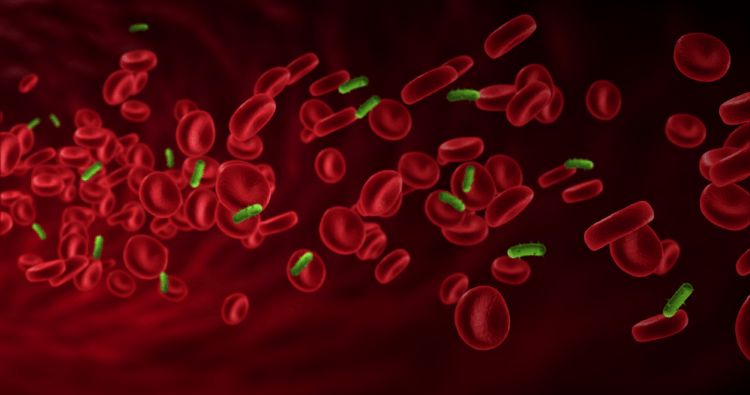
Bị tăng ure máu là một trong các dấu hiệu có thể bị hoại tử ống thận cấp
If you have some of the following signs, you may have acute tubular necrosis after ischemia:
Oliguria or anuria: At first, the urine output decreases to less than 500ml/day, then leads to anuria. , the patient does not have urine, if urinating, the urine output is only a few drops to 5ml throughout the day. Hyperuremia: When there is uremia, the patient often has digestive disorders, vomiting, diarrhea. There may be irritability, convulsions, coma, dyspnea, fast or slow heart rate. When the urine test has protein, red blood cells, white blood cells, urinary urea decreased, blood urea increased, creatinine increased, blood potassium increased, blood sodium decreased. Frequent urination: The urine is often cloudy at first, then clear; The amount of urine increases gradually, maybe 3-4 liters/day. Blood urea and creatinine increased, urinary urea remained decreased due to the condensing function of the renal tubules has not been restored. Patients easily die from high blood urea. Acute tubular necrosis after renal ischemia can cause complications such as:
Cerebral edema causing seizures or acute pulmonary edema; Cardiovascular collapse. There are many cases of complications in the renal tubules. Tubular lesions are not uniform across tubular segments. The tubular interstitium is flattened or dilated, especially in the distal tubule. Possible necrosis of tubular intercellular cells, tubular cell loss of protoplasm and nucleus. In severe cases, there will be necrosis of each segment of the renal tubule and possible rupture of each renal tubule segment.
3. Diagnosis and treatment of acute tubular necrosis after ischemia
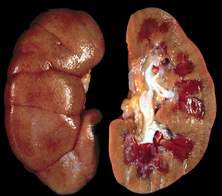
Hình ảnh chẩn đoán hoại tử ống thận cấp sau thiếu máu
3.1. Diagnosis of acute tubular necrosis after ischemia If it is suspected that you have acute tubular necrosis after renal ischemia , in addition to the above signs, your doctor may recommend that you perform the following tests:
Laboratory Urinalysis: Urinalysis is the most important test method in the diagnosis of acute tubular necrosis after ischemia. Through the analysis of urine samples, the doctor will identify signs that cause acute tubular necrosis after ischemia.. Kidney biopsy: From the kidney tissue, the doctor can check the function and detect the signs. abnormality in this institution. Blood test: This test is also important to measure the levels of sodium and creatinine in the blood. CT: A CT scan allows the doctor to see the specific condition of the small tubes inside the kidney. Urine sodium and creatinine test: When the kidney tubules are damaged, this organ will not be able to excrete excess salt (sodium) and minerals. Therefore, the concentration of sodium and creatinine in the urine will tend to be elevated. In addition, the doctor can measure the weight and osmolality of the urine to respond to the diagnosis of acute tubular necrosis after ischemia.
3.2. Treatment of acute tubular necrosis after ischemia

Trong quá trình điều trị bạn phải hạn chế uống nước để giảm lượng chất lỏng dư thừa
The goal of treating acute tubular necrosis after ischemia is to prevent life-threatening complications in the patient. Methods focus on preventing fluid and waste buildup and repairing damaged tubules.
You must limit water intake to reduce excess fluid intake. You may then be prescribed medication to reduce fluid and waste buildup inside the kidneys. Reduce the amount of sodium and potassium in the diet. If your potassium levels are too high, you may need temporary dialysis. Dialysis helps to balance fluid and electrolyte components in the body. It also helps control kidney function and improve symptoms. Acute tubular necrosis after ischemia is a dangerous disease with a risk of death if not promptly examined and treated. Therefore, regular health checkups have the effect of detecting and treating the disease at an early stage, which helps to prevent the disease from leaving complications, and the treatment method also becomes easier.
Currently, Vinmec International General Hospital has performed examination, treatment, prevention and surgery for many urological diseases with good results, helping patients recover quickly. With comprehensive medical quality, a system of modern equipment, a team of good doctors with expertise in applying the latest methods of diagnosis and treatment of urological diseases will help customers maintain stable health. long term determination.
To register for examination and treatment at Vinmec International General Hospital, you can contact Vinmec Health System nationwide, or register online HERE
This article is written for readers from Sài Gòn, Hà Nội, Hồ Chí Minh, Phú Quốc, Nha Trang, Hạ Long, Hải Phòng, Đà Nẵng.

